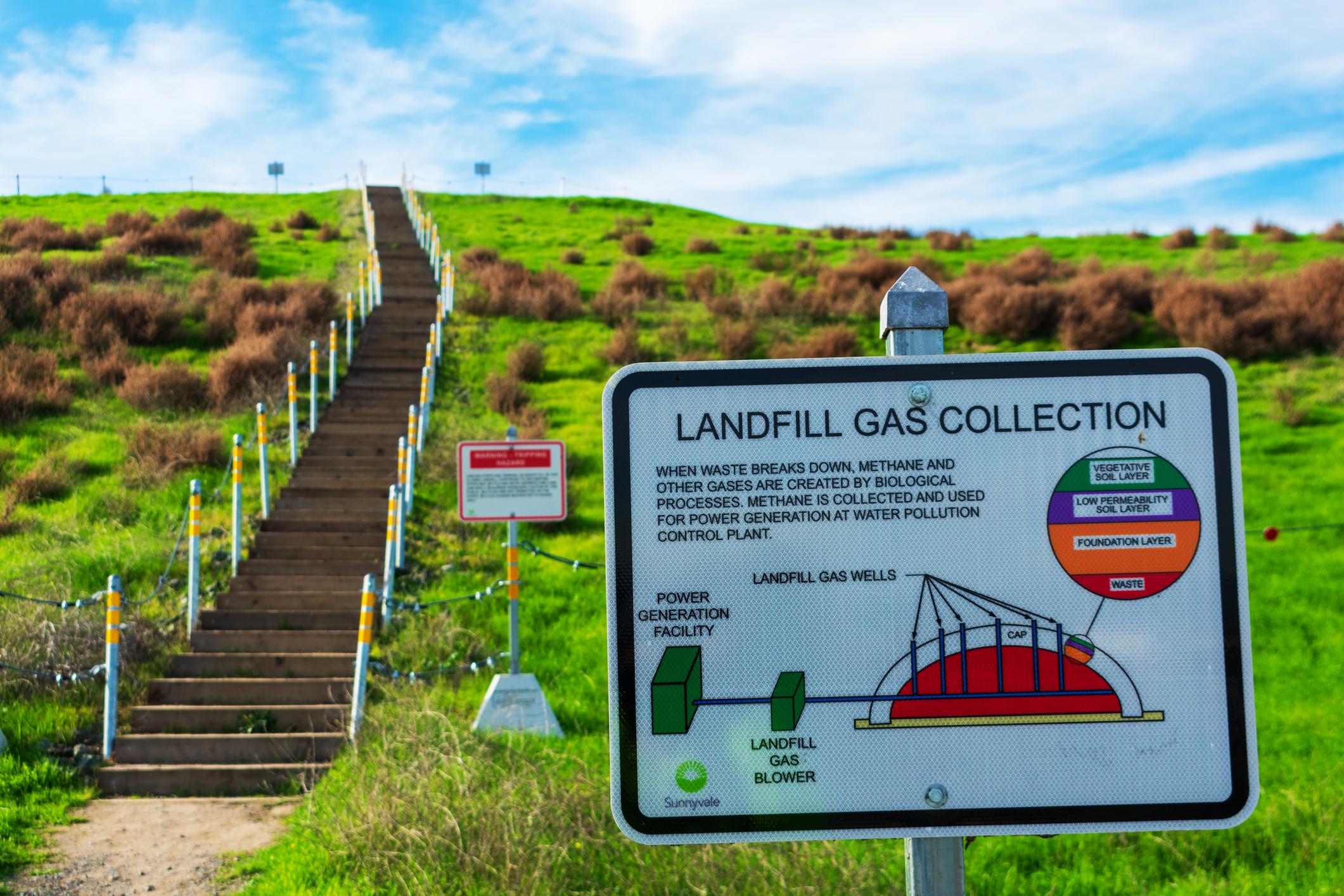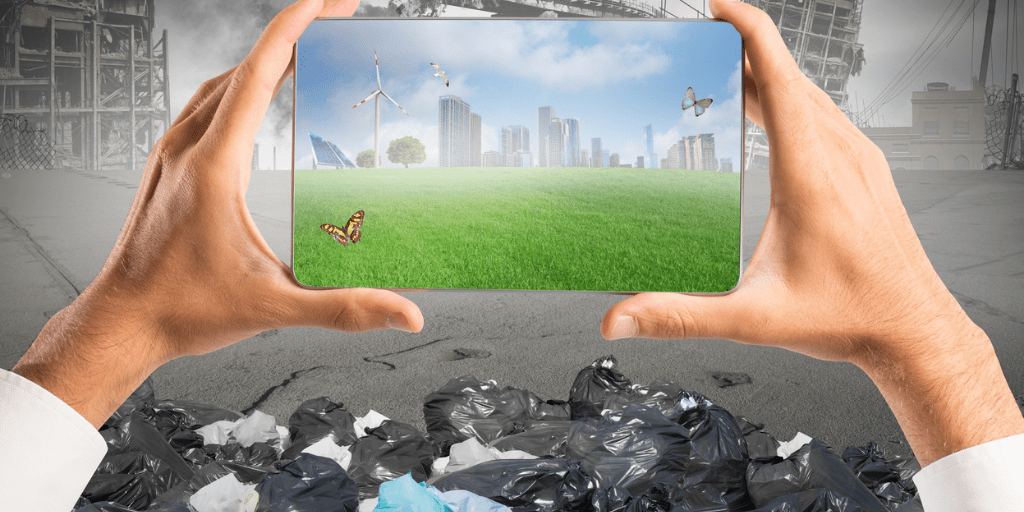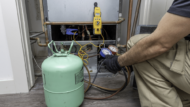In Los Angeles, California, an innovative transformation is underfoot. Waste is no longer just an endpoint – it’s the beginning of something energetic and new. Landfill gas processing (LFG) captures the emissions arising from refuse decomposition and cleverly repurposes them into renewable energy, turning what was once a problem into a potent solution for power generation. Such initiatives mark a significant crossover of waste management and energy resourcefulness, and Los Angeles’ mastery of this process serves as a promising precedent for sustainable urban development.
As we delve into understanding LFG, it becomes apparent that this isn’t just about managing waste—it’s a comprehensive approach to environmental stewardship. The meticulous collection, treatment, and transformation of landfill emissions into usable energy is a triumph of science and sustainability. This process reflects a city that’s not only rich in innovation but also deeply invested in protecting its ecology and the health of its residents. The journey of LFG from an unwanted byproduct to a valuable asset is an inspiring tale of modern environmental engineering, one that the City of Angels is writing with conviction.
Understanding Landfill Gas Processing
 So, what is landfill gas processing? Landfill gas processing (LFG) is the capturing and purification of emissions from waste decomposition. The method converts potential pollutants into usable energy, representing a critical juncture where waste management intersects with renewable energy production. This synergy taps into the heaps of organic waste in landfills, harnessing gases before they venture skywards, effectively mitigating their environmental impact.
So, what is landfill gas processing? Landfill gas processing (LFG) is the capturing and purification of emissions from waste decomposition. The method converts potential pollutants into usable energy, representing a critical juncture where waste management intersects with renewable energy production. This synergy taps into the heaps of organic waste in landfills, harnessing gases before they venture skywards, effectively mitigating their environmental impact.
The process begins with the extraction of landfill gas (LFG), which is then funneled through a series of filtration stages. These stages aim to remove a variety of impurities, such as volatile organic compounds and other harmful substances, readying the gas for its next phase of life. The EPA underscores the utility of this process by revealing that if utilized nationwide, LFG could potentially fulfill the natural gas needs of nearly 5 million homes.
Finally, the processed gas—now predominantly methane—is refined to meet energy standards. It stands poised to contribute to the grid, morphing from a mere byproduct of our consumption into a linchpin of the green energy movement. These innovative steps underscore the role of engineering prowess and environmental strategy in crafting a more sustainable Los Angeles.
The Los Angeles Approach to LFG
Los Angeles is forging a path to sustainability by leveraging landfill gas processing at the forefront of its waste management strategy. The Chiquita Canyon landfill in Castaic and Sunshine Canyon landfill in Granada Hills serve as pillars of this initiative. LFG is captured and processed here through meticulously engineered systems designed to purify and convert it into renewable energy. These systems turn the tide, transforming the city’s waste into a valuable commodity.
The process is as fascinating as it is crucial; after collection, the gas passes through multi-staged treatments to remove contaminants. According to the California Energy Commission, such practices make California one of the top U.S. states producing renewable energy from LFG. This focus closes the loop of the waste cycle in Los Angeles, powering homes and businesses while carving the city’s niche as a pioneer in green technology.
Purification and Power Generation
Efficiency is key in the purification phase of landfill gas processing, where raw LFG undergoes a rigorous clean-up. Initially, the gas is laden with various impurities that could impede its energy conversion. The refining stages, therefore, are designed to meticulously remove these contaminants, paving the way for its use as a renewable energy source. This stage is not just about cleaning; it’s about ensuring the gas meets the strict quality standards for energy generation.
Once purified, the now highly efficient methane-rich gas is ready to embark on its next venture—power generation. It’s fed into robust engines and generators, a step vital for producing both electricity and heat. Catering to the needs of the present without compromising the future, these power plants contribute significantly to the city’s energy mix. Reports from the Los Angeles County Sanitation District highlight that, locally, LFG is poised to generate enough electricity to power tens of thousands of households annually, showcasing a model of urban sustainability at work.
The California Environmental Payoff
The transformation of landfill gas into energy symbolizes a major environmental victory. As a remedial measure, capturing and converting methane from LFG translates into drastically reduced greenhouse gas emissions. By preventing these gases from escaping into the atmosphere, Los Angeles positions itself as a leader in combating climate change. The environmental benefits stretch far, as the repurposed gas aids in deterring the effects of global warming.
Harnessing LFG as a renewable resource stands as a testament to the city’s commitment to sustainable practices. As per the Environmental Protection Agency, processing LFG for energy can significantly negate its environmental impact compared to releasing it unchecked. This intelligent use of waste demonstrates a circular economy in action, where even the byproducts of our urban lifestyle are looped back into a productive cycle. Such initiatives reshape the narrative, showing how cities can contribute to a cleaner and more resilient planet.
Economic Perks for the People of Los Angeles
Residents of Los Angeles stand to gain substantially from the city’s landfill gas processing endeavors. Converted LFG joins the local power grid as clean electricity, contributing to the city’s energy independence. By bolstering sustainable energy resources, the city reduces its demand for fossil fuels. This shift to renewable sources promises to streamline electricity costs, potentially insulating the community from the unpredictable prices associated with non-renewable energy sources.
The financial gains from this green energy initiative stretch beyond simple utility bills. Revenue from the sale of this clean electricity flows back into the Los Angeles economy, finding its way into public infrastructure and environmental projects. According to the California Environmental Protection Agency, such investments foster local job growth and support various public health and environmental quality programs. Thus, the city’s residents experience a tangible improvement in their quality of life, driven by a commitment to environmental sustainability and economic vitality.
Elevating Air Quality and Health
Improved air quality is a significant triumph heralded by Los Angeles’ landfill gas (LFG) processing plants. By trapping methane and other harmful emissions, these facilities play a vital role in reducing air pollution. Strategically converting LFG to energy not only utilizes these gases effectively but also prevents them from exacerbating smog and poor air quality in the region.
The health implications are profound, considering the array of pollutants that are contained and not released into the city’s atmosphere. The Los Angeles County Department of Public Health asserts that such measures significantly reduce the occurrence of respiratory problems in the community. As LFG plants mitigate airborne contaminants, residents enjoy a cleaner environment, indicative of the city’s broader commitment to public health and a cleaner, more breathable landscape.
Toward a Greener Tomorrow in Los Angeles
The strides made by Los Angeles in landfill gas conversion set a precedent for urban environmental responsibility. It illustrates a city where renewable energy fortifies the grid, and sustainability is embedded in its waste management philosophy. This practice of turning decomposing waste into clean energy paints a brighter picture for the environment, establishing a blueprint for cities worldwide.
These efforts align with the state’s ambitious renewable energy goals outlined by the California Energy Commission, aiming for all retail electricity sold to be sourced from renewable energy and zero-carbon resources. In this light, Los Angeles is transforming waste and leading by example, showing how metropolitan areas can drive the change toward a sustainable and greener tomorrow.
Vision for Sustainability
As Los Angeles reinvents its waste for a sustainable future, it sets an inspiring example of environmental stewardship. The city harnesses the once-ignored potential of landfill gas, transforming it into a valuable clean energy resource. This leap forward signals a robust commitment to both the planet and the people, creating a model of urban ingenuity that breathes life into the very air we inhale.
In crafting a future where energy no longer demands the heavy toll of carbon footprints, Los Angeles illuminates the path. The city’s dedication to landfill gas processing is a powerful stride towards a cleaner, more sustainable world. Here, sustainability isn’t just a buzzword—it’s an actionable blueprint, with every converted molecule of methane marking progress. This endeavor is a testament to the city’s forward-looking ethos, making Los Angeles a lighthouse of green innovation for cities globally.







